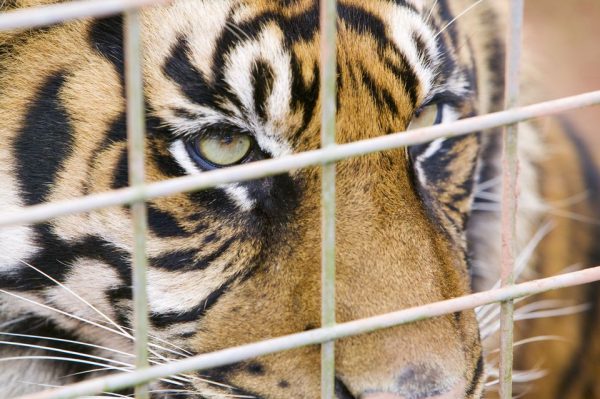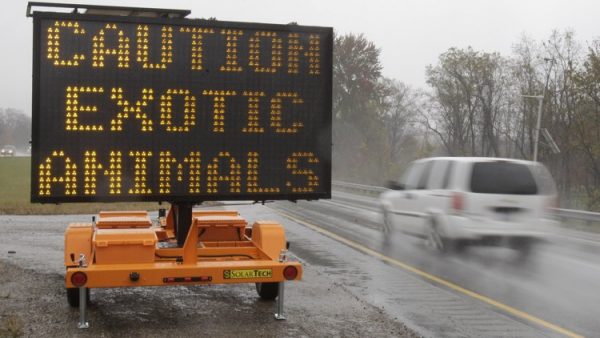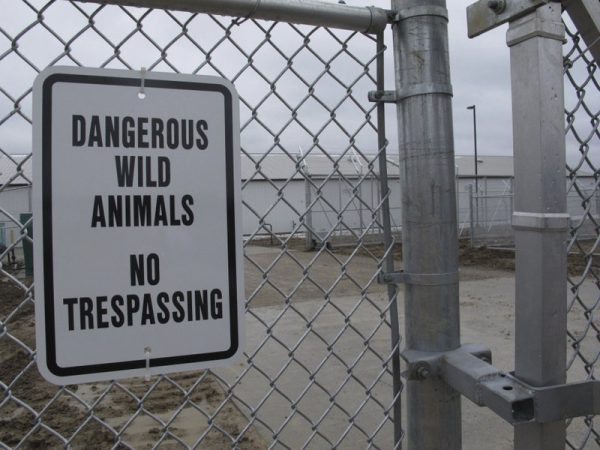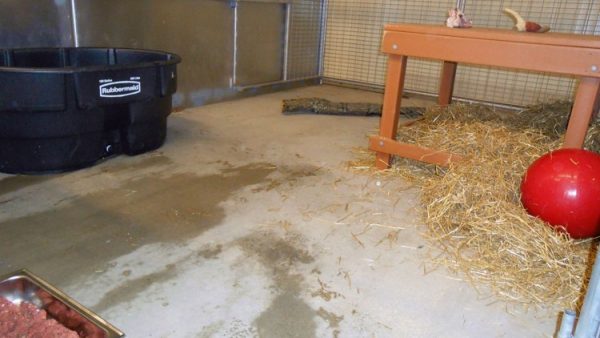
Ashley Cooper Corbis Documentary/ Getty Image
The Zanesville Massacre
In the late afternoon on October 18, 2011, Terry Thompson opened cage doors that held lions, tigers, bears, wolves and other exotic animals on his Zanesville farm. After setting 56 animals free, he turned a gun on himself ending his own life. Reports of wild animals running loose began to light up the Muskingum County Sheriff’s office phone lines. Sheriff Lutz didn’t know how many animals Thompson kept on his farm or what time he turned the animals loose, what he did know was it would be dark within 90 minutes so there was no time to waste.

Image from Ohio Department of Agriculture
Sheriff Lutz dispatched deputies from the SWAT team to the Thompson property. Nobody would be prepared for what they found. With no time to spare, the team was forced to kill 18 tigers, 17 lions, 8 bears, 3 mountain lions, one baboon and two wolves. Later it was confirmed that Thompson kept 56 animals classified as exotic on his farm. Forty-nine were killed by the SWAT team, the remaining grizzly bear, three leopards and two monkeys were captured alive and taken to the Columbus Zoo and Aquarium. A monkey and a grey wolf were at large.
Ohio Steps Up as a Leader on Exotic Animal Laws
This event spotlighted Ohio’s lack of laws concerning ownership of exotic animals. Six years later on the anniversary of what has become known as The Zanesville Massacre, Ohio no longer has a reputation as a state with deficient animal laws. On June 5, 2012, Governor John Kasich signed a law requiring owners to register and micro-chip their animals, and meet strict standards on housing, training, transportation, insurance and enclosures. This law prohibited the acquisition of more animals, with exception for certain species, and required the surrender or seizure of animals from owners who failed to meet the standards.
Dangerous Wild Animal Law Crackdown was Costly

Image from Ohio Department of Agriculture
The Ohio Department of Agriculture spent more than $3 million to build a 20,000-square-foot temporary animal holding facility east of Columbus, and has since spent more than $3.6 million to house, feed, transport and care for the animals housed there. Since opening in early 2013, the Reynoldsburg facility has held 207 confiscated or surrendered wild animals, including 107 American alligators, 39 snakes, 18 black bears, 16 tigers, 7 brown bears, and 5 cougars. The operating cost works out to be approximately $7100 per animal per year.

Food preparation area at the Ohio Department of Ag Exotic Animal Facility.
Image from Ohio Department of Agriculture
The temporary holding facility is under 24-hour monitoring and includes 30 large animal enclosures for bears, big cats and others, as well as a snake and reptile room. The department takes care to ensure the animals are treated well, including providing each with a species-appropriate diet. The big cats, as carnivores, are fed a meat-based diet plus vitamins, and the omnivorous bears are given a pellet-based diet along with fresh fruits and nuts. .
Tours and photos are not permitted and the ODA does not discuss which animals are held there at any one time and for how long. “We never give out the exact number or types of animals we have in the facility just for security purposes,” said Dr. Melissa Simmerman, assistant state veterinarian.
Cage sizes meet the minimum set for private owners of dangerous wild animals, but the animals are not given outdoor exercise areas. They are given “enrichment” activities such as nuts tucked into a log for the bears to root out.

Holding cage at the ODA facility
Image from Ohio Department of Agriculture
The animals spend anywhere from a few nights to a few months at the facility, depending on how long it takes for the state to find an appropriate animal sanctuary placement. The law didn’t prohibit private ownership, but those who keep exotic animals on their property must follow the rules.
In 2017, the Ohio Department of Agriculture has issued 45 permits for 163 animals in private hands. This is down from 64 permits for 218 animals in 2014, the first year the new regulations were in effect. Permit holders are subject to annual inspections that are both scheduled and unscheduled. Before this law went into effect Ohio was one of the few states left in the country that had no dangerous wild animal-type regulations. The state has come a long way from October 18, 2011 when the Thompson tragedy occurred. The law is not only good for public safety but for the health and well being of the animals too.
this makes me so very happy!
I remember that incident. The poor man and those desperate animals – I get upset even now.
Ohio is to be commented for, basically, picking up on the stupid mistakes of lamentable, and utterly stupid human beings. I could stand and sheet for them, having the courage and good sense to step up and handle this with good sense and responsibility.
As for the ‘owners’ of these WILD animals – words (that are printable) fail me….
if Bolivia, Columbia and Peru can step up { circus bans } the entire US can move forward in ownership bans and circus as well.
My copy of Lion Ark arrived week before last; if you haven’t seen it; I won’t toss in any spoilers ~~~???
Let’s just say it made an impression that won’t soon be forgotten